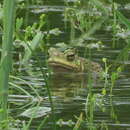en
names in breadcrumbs


This species can be found in a part of thePatagonian steppe ecoregion, a biome that extends approximately from the mid-Andean Precordillera southward, terminating immediately north of the Strait of Magellan near the Rio Gallegos. This steppe is bounded on the west by the cold temperate forest slopes of the Andes Range, and on the east by the Atlantic Ocean. It extends northwest as shrubland steppe and to the north as thorn thicket, gradually making the transition to Argentine Monte. This area is a cold desert scrub steppe, with very high wind velocities throughout the year, as well as year around frosts likely. This ecoregion has high levels of endemism for both plants and animals.
In general, the vegetation of this steppe ecoregion is xerophytic and highly adapted for protection against drought, wind, and herbivores. The vegetation is considered strongly related to Andean flora however the average numbers of endemic species for dominant families is very high with as much as 60 percent endemism in Leguminosae and 33 percent in Compositae families. Three main types of vegetative communities are exhibited in the Patagonian steppe. The most common type is semi-desert (45%), with shrub-steppe (30%) in second place, and grass-steppe (20%) in third place in terms of percent of occurrence. Desert-like areas also exist here with little to no vegetative cover; however, some wet meadow areas are present which have close to 100% plant cover.
This taxon is one of the set of amphibians present in the Patagonian steppe; the complete set of amphibians (not necessarily sympatric) in this ecoregion is as follows:the Endangered Andalgala Water Frog (Telmatobius scrocchii), a limited range anuran known only from the El Ingenio stream and tributaries the Río Arenal, Redonda and Lio los Cerrillos, in the Campo Arenal area of Catamarca Province, northwestern Argentina; Argentine Toad (Rhinella arenarum), found in ponds and stagnant bogs; El Rincon Stream Frog (Somuncuria somuncurensis); Gray Four-eyed Frog (Pleurodema bufoninum), an anuran typically found beneath rocks or under vegetation; Island Spiny-chest Frog (Alsodes monticola), known to only a single location at Inchy in coastal southern Chile; Laguna Raimunda Frog (Atelognathus reverberii), known from merely five lagoons on the Somuncura Plateau, an isolated basaltic plateau in Río Negro Province, Argentina; Las Bayas Creek Frog (Atelognathus solitarius);, found only at Las Bayas Creek, 48 kilometres south from Pilcaniyeu, Río Negro Province, Argentina; Olive Spiny-chest Frog (Alsodes verrucosus), occurring in only two localities in Andean Chile: Cautin and Puyehue; Patagonia Frog (Atelognathus patagonicus), found in isolated lagoons, rocky and volcanic areas bordering Laguna Blanca; the Vulnerable Portezuelo Frog (Atelognathus salai), known only from a pond at Laguna de los Gendarmes and other nearby ponds in southwestern Argentine Patagonia; Tonchek Spiny-chested Frog (Alsodes gargola), found in the provinces of Río Negro within the Parque Nacional Nahuel Huapi, (A. g. gargola), Neuquen volcanic tablelands of Lonco Luan and surroundings (A. g. neuquensis) and Parque Nacional Los Alerces and Parque Nacional Lago Puelo; Warty Toad (Rhinella spinulosa); and the Zapala Frog (Atelognathus praebasalticus), endemic to northwestern Argentine Patagonia, and localities in Neuquen Province.
Rhinella arenarum is a species of toad in the family Bufonidae that is found in southern Brazil and Uruguay; it can also occur in Paraguay. It is also found in Argentina from the Chubut Province northward and Bolivia east of the Andes.[1][3] Rhinella arenarum inhabits small ponds or bogs with stagnant water, in dry, temperate habitats, mostly in open areas. It is locally common. While it is collected for educational and scientific uses and also suffers from road kills, it in general is not threatened.[1] Fossils representing this species are known with certainty from the late Pliocene to the Holocene of central Argentina.[2]
{{cite journal}}: CS1 maint: multiple names: authors list (link) Rhinella arenarum is a species of toad in the family Bufonidae that is found in southern Brazil and Uruguay; it can also occur in Paraguay. It is also found in Argentina from the Chubut Province northward and Bolivia east of the Andes. Rhinella arenarum inhabits small ponds or bogs with stagnant water, in dry, temperate habitats, mostly in open areas. It is locally common. While it is collected for educational and scientific uses and also suffers from road kills, it in general is not threatened. Fossils representing this species are known with certainty from the late Pliocene to the Holocene of central Argentina.